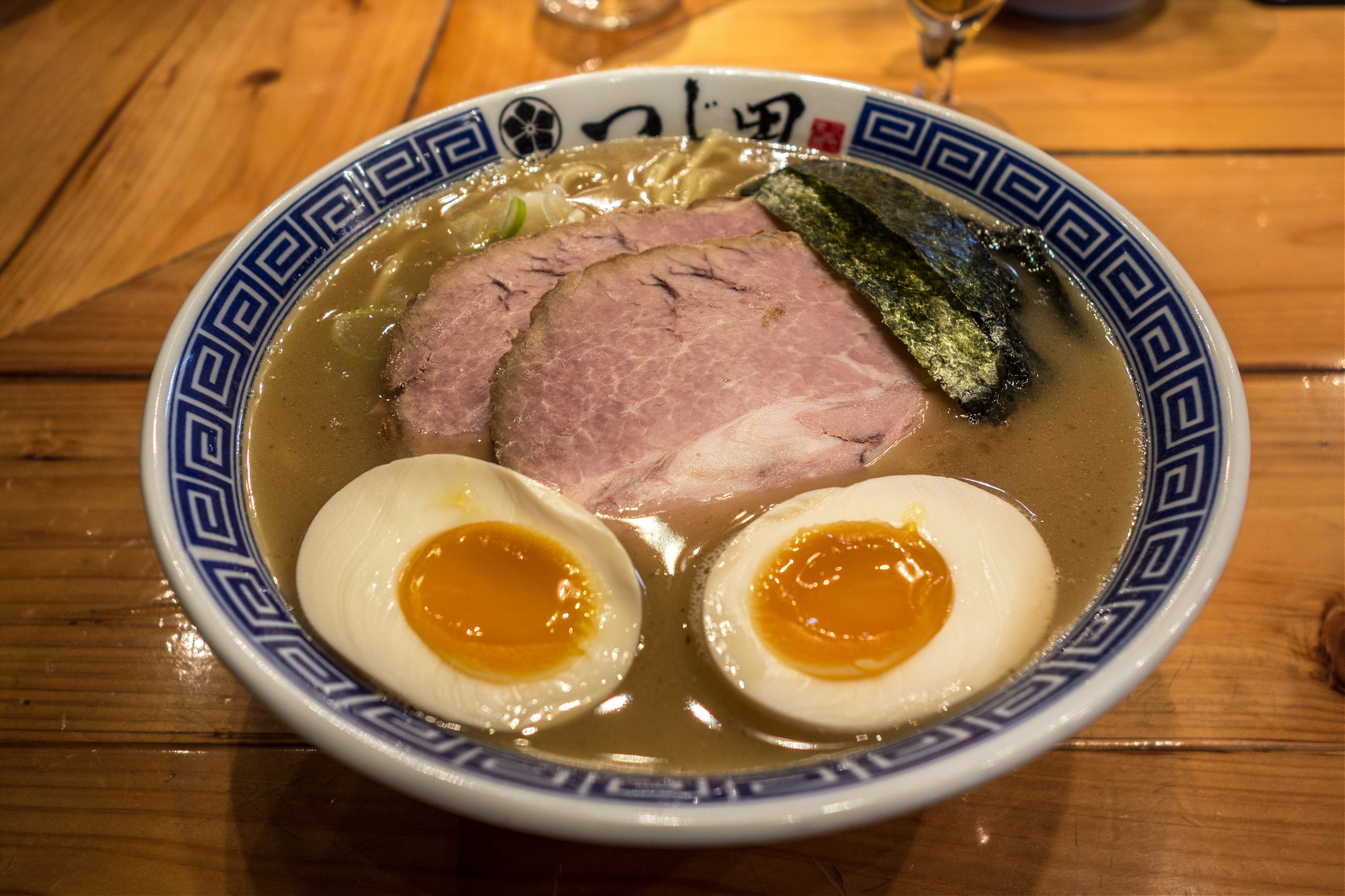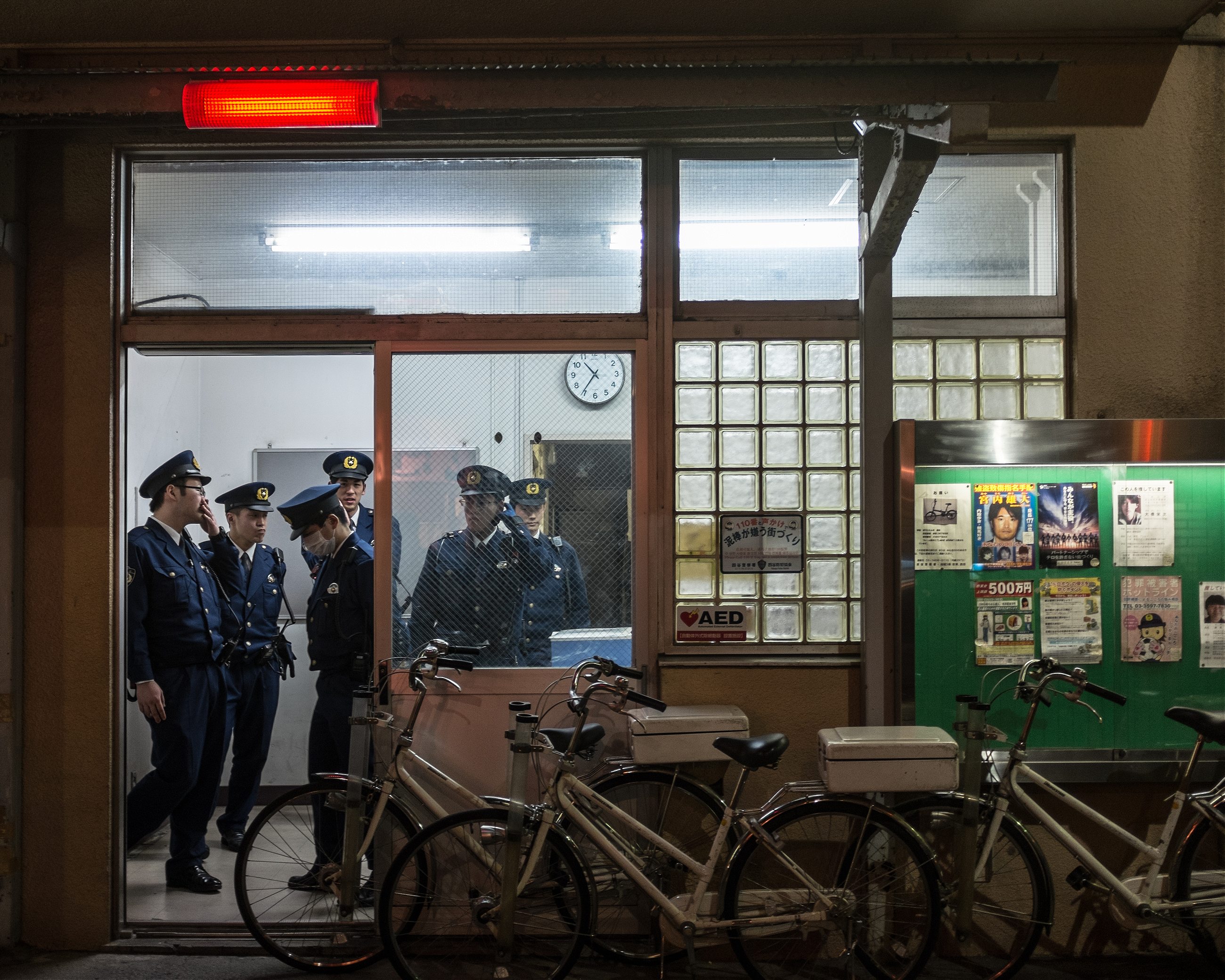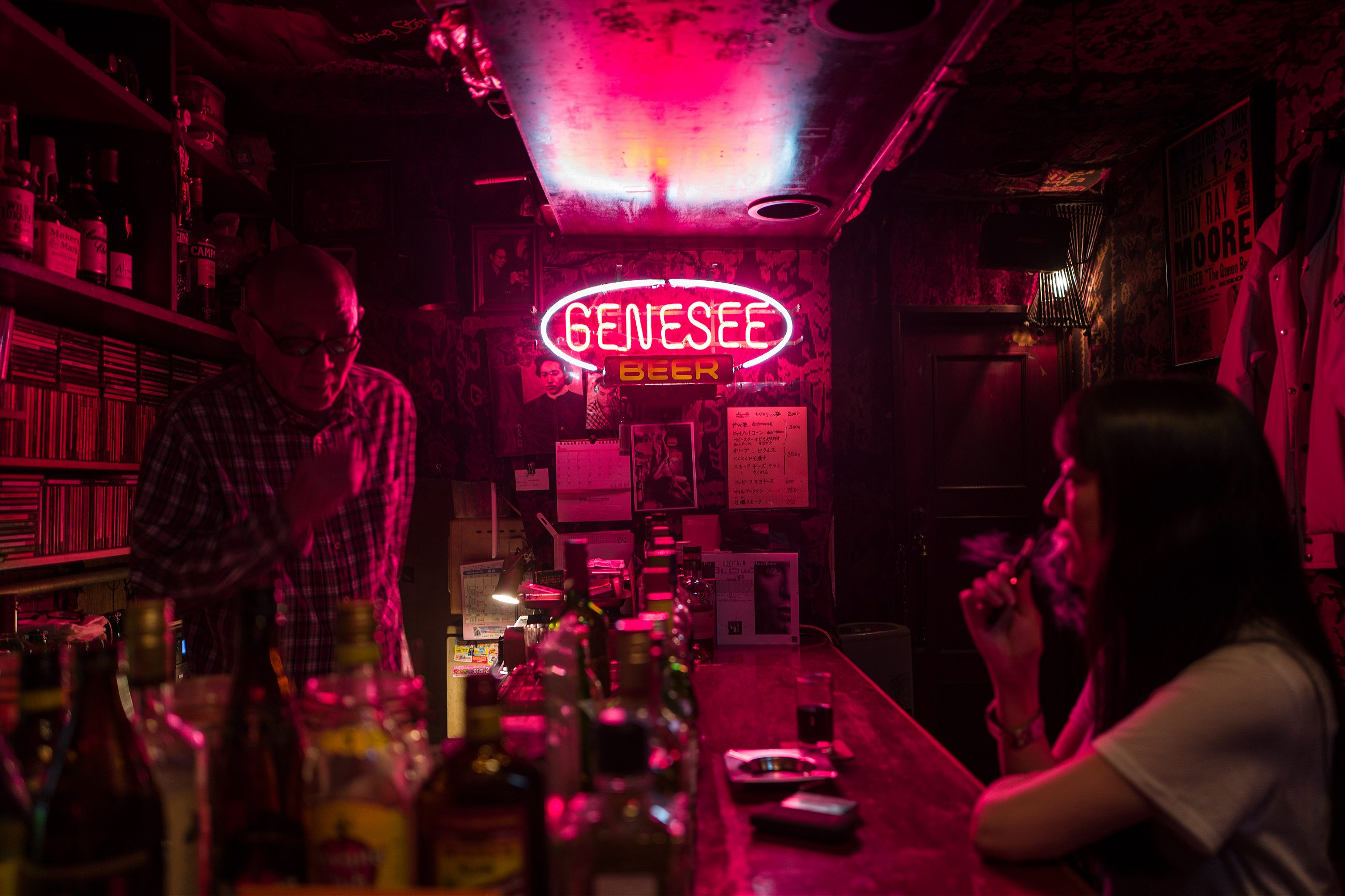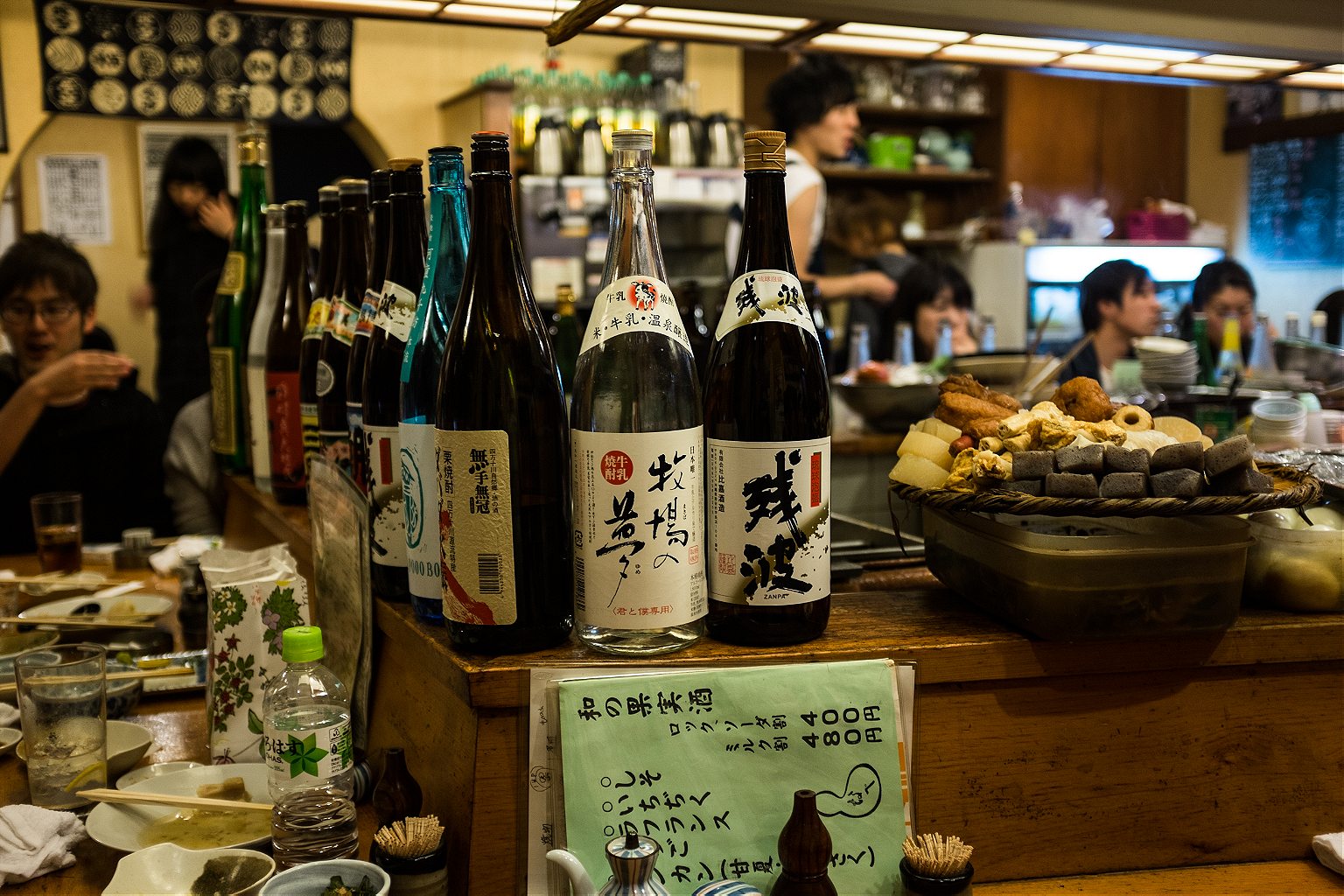Your essential guide to the greatest feast on earth.

Tokyo is the greatest feast on earth. Not New York. Not Paris. Not Bangkok. All of these cities offer sprawling, beautiful food cultures worthy of a lifetime of exploration, but none can compare with the depth and breadth of deliciousness proffered by Tokyo’s culinary legions. First of all, it’s the size. New York City has some 30,000 restaurants; Tokyo, 160,000. (Take a moment to let that sink in, please.) But Tokyo’s preeminence as the world’s most exciting dining destination isn’t a quantity thing: it’s a quality one. There are a dozen factors that make Japanese food so special—ingredient obsession, technical precision, thousands of years of meticulous refinement—but chief among them is one simple concept: specialization. In the Western world, where miso-braised short ribs share menu space with white truffle pizza and sea bass ceviche, restaurants cast massive nets and try to catch as many fish as possible, but in Japan, the secret to success is choosing one thing and doing it really well. There are people who dedicate their entire lives to grilling beef intestines or slicing blowfish or kneading buckwheat into tangles of chewy noodles—microdisciplines with infinite room for improvement. The concept of shokunin, an artisan deeply and singularly dedicated to his or her craft, is at the core of Japanese culture. If you want to know why Japan’s food culture has no peer, look no further than the shokunin. These are people who pursue perfection down to its last decimal point, whose persistence and focus wear away at the sharp edges of life’s great challenges like a stream of mountain water over a granite stone. Tokyo is the city of ten thousand shokunin. If you come to Japan to eat, you come for them.


Smaller is better. It doesn’t matter what you’re eating: eel, sushi, noodles, sweets, cocktails. Small establishments are where shokunin do their work. It may be intimidating to walk into a six-seat bar, but this is where you will find the good stuff—a place where the chef and the staff (most likely husband and wife) are unwaveringly dedicated to their craft. The most exclusive places require an invitation or a Japanese guest to accompany you, but the city is bursting with warm, intimate establishments dying for a chance to blow your mind.

It’s not that expensive. Legions of potential visitors pass on a trip to Japan (and Tokyo specifically) because of the misguided belief that the country is unbearably pricey. Compared to Thailand or Central America, it’s not cheap; put next to the UK, Switzerland, or any northern European country, Japan looks affordable. What is expensive: cab rides, ryokan and high-end hotel chains, drinking in nice bars, formal sushi meals, and Japanese beef. What isn’t expensive: public transportation, business hotels, drinking in izakaya, conveyor sushi, and beautiful bowls of noodles. You can’t survive on $22 a day, but you can sleep and eat pretty well in Tokyo for $100 if you’re careful. You’ll find good hotels for $70 a night, an unlimited day pass on public transportation for $5, and more jaw-dropping meals for under $10 in this country than you’d find on most continents.

English is scarce. Not solar-eclipse scarce but pretty close. Few people in the world speak less English than the Japanese, which means you’ll need to sharpen your body language skills, learn a few key phrases, and bring a willingness to laugh at yourself in the long stream of slightly embarrassing situations that will inevitably follow you around the country. Memorize ten or fifteen food words you can use when you get to a restaurant and can’t read a single symbol in one of Japan’s three alphabets. Above all, remember hai, “yes” or “okay”, the most valuable word in the dictionary, a single high-pitched syllable you can finesse into something resembling a conversation. Tone and inflection can bend the word into a dozen different meanings—from “Yes, I’m a huge fan of this strange and beautiful country” to “Of course I’d like you to soak me in unfiltered sake.” Besides, you wouldn’t want to say no to the Japanese, would you? Didn’t think so.


Get in the Olympic spirit. Tokyo is taking its role as the host of the 2020 summer games very seriously. That means billions of dollars of investment in infrastructure, much of it geared to making the city more attractive to the rest of the world. Major additions to the railways systems, a rising tide of high-end hotels, aggressive makeovers of the city’s tourist hubs, and a surge in menus and signs in English are all are part of cementing Tokyo’s image as a world-class destination. The Japanese government has high expectations that Olympics will launch Tokyo and the rest of the country into a new tourism stratosphere (in 2016, Japan was only the fifth most-visited country in Asia); if they’re right, book your tickets now and take it all in before the world is the wiser.

Subtlety is king. Japan is a society of deep-seated traditions and formalities that can puzzle the outsider, but getting it right can really make a difference for you and your hosts. Some basics to remember: Personal contact is mostly avoided in Japan, so mind your body and be prepared to bow rather than shake hands (a gentle bow for friends and family, a deeper dip from the waist for business relations or people of importance). Be punctual—the Japanese make the Swiss look lax with time, and whether meeting friends or making a dinner reservation, it’s good form to show up five minutes early. Jaywalking and any other casual rule-breaking is more deeply frowned upon than you think, so please avoid. And in general, avoid anything to cause undue attention to yourself or those around you; though you’ll never blend in, Japanese value subtlety over aggressive individuality.


Go underground. Tsukiji, the world’s largest fish market, may be Tokyo’s biggest food attraction, but massive crowds, tourist restrictions, and an uncertain future makes it a less-than-essential stop these days. If you really want a full dose of Japanese food culture, head to a depachika, the basement of high-end department store dedicated to the full breadth of Japanese food culture. Think the world’s best food court crossed with the mother of all upscale markets—a sprawling Japanese food fantasy featuring everything from street staples like yakitori and onigiri to an encyclopedic selection of whisky and sake to a high-end fruit emporium complete with fruit sommeliers. Come for the free samples, but stay for the spectacle. And leave with a suitcase worth of take-home of Japan’s best ingredients: dried seaweed from Hokkaido; rice from Niigata; yuzukosho, a citrus-spiked chili paste that you will want to slather on everything.

Pack a Pasmo. Tokyo’s serpentine subway system has been known to bring even the most battle-tested travelers to their knees. Two separate transit systems—the government-operated Toei Subway and the private Tokyo—only compound the challenges; collectively, they operate 280 stations and 13 separate lines across 300 kilometers of tracks. The first step in simplifying matters is to pick up a Pasmo, a life-saving super-smart card that can be swiped to pay for everything from subways to buses to vending-machine snacks. Load it up with yen and travel freely between mode of transport and the next, then stop by a convenience store and use it to pay for an egg sando and a cold biru as a reward for your savvy travels.

The concierge is your best friend. Tokyo hotels generally have tiny rooms, but what they lack in size they make up for with service. Even budget business hotels will be happy to help you with vital pieces of planning—from navigating the sprawling city contours to scoring reservations at high-end restaurants. (Many top restaurants block calls from unknown numbers, but hotels can almost always get through.) Before venturing out to a new destination, ask an employee for a print out of the restaurant’s detail page on Tabelog (like this one for Saito). It’s absolutely essential if traveling in taxi, or if you get lost on foot and want to solicit help from a local.


Carry cash. It may be surprising to learn that the country that invented the bullet train and robot strippers still relies on hard currency, but places from five-star ryokan to top-tier sushi restaurants refuse to take credit cards, which means you’ll need to carry a thick wad of yen around at all times. Very few Japanese ATMs work with foreign cards; instead use the machines in post offices and 7-Elevens, the two most reliable ways to get cash.

When in doubt, izakaya. Knowing exactly where to eat and what to order can be daunting when you first touch down in Tokyo; the izakaya is your salvation. The Japanese equivalent of a Spanish tapas bar, the izakaya is where you come to drink (rice) wine and eat small plates of intensely delicious food. The food runs the gamut, a sort of greatest hits of Japanese cuisine that offers a bit for everyone: sashimi, tempura, karaage (fried chicken), grilled fish, meat-and-vegetables stews. Izakayas come in all shapes and sizes, from intimate Michelin-starred outposts to loud, smoke-filled taverns, but good times and copious sake is the glue that binds them.



Eat like the Japanese. Family style eating is popular in Japan and don’t be surprised if everyone splits the tab evenly, regardless of how much you eat and drink. The upside is that you’ll get to taste a really wide variety of deliciousness. People in Japan like to practice “sankaku tabe” or “triangle eating.” If you have more than one dish, which is often the case with Japanese meals, don’t polish off one plate at a time. Instead, alternate between dishes: take a bite of your pickled radishes, slurp a bit of your miso soup, and take a mouthful of rice and start all over again. Sankaku tabe is said to highlight how each dish complements another, something the chef has meticulously planned. Some other handy rules for navigating etiquette: Always kanpai before you take that first sip of beer or sake. Make sure everyone else has a full glass, and then wait for one of your drinking buddies to serve you. Don’t start eating until everyone’s been served. There will likely be people pushing you to eat before they get their food, but the proper response is to decline, and wait until everyone has food in front of them. In the same vein, don’t reach for the last serving of food if you’re sharing. Everyone will go around the table several times offering it up to others, but be sure to show the appropriate reluctance.

Put away that tip. You’ll experience impeccable service while in Japan but you won’t have to worry about adding 20 percent to each of your meals. If you do try to tip, your servers will be forced to decline or insist that they give you change and you’ll just make things awkward for them. Instead, express your satisfaction with a hearty “gochisousama” (basically “that was delicious”) when you’re done with your meal.


Buy your ticket to freedom. Tokyo is amazing, worthy of a lifetime of exploration, but so is the rest of the country, and Japan’s train system makes traveling throughout the country a joy. Purchased outside the country (through a travel agency, online reseller, or at international airports), a Japan Rail Pass allows for unlimited travel for up to three weeks on all but a few special trains in Japan. Not only will it save you money and time (a pass costs around $260 for unlimited travel in a week and doesn’t require reservations on most trains) but it also turns the country into a traveler’s buffet, allowing you to improvise your daily destinations based on your various appetites for culture, climate, and regional cuisine. Go anywhere and everywhere, just never board a train without a bento box and a beverage.